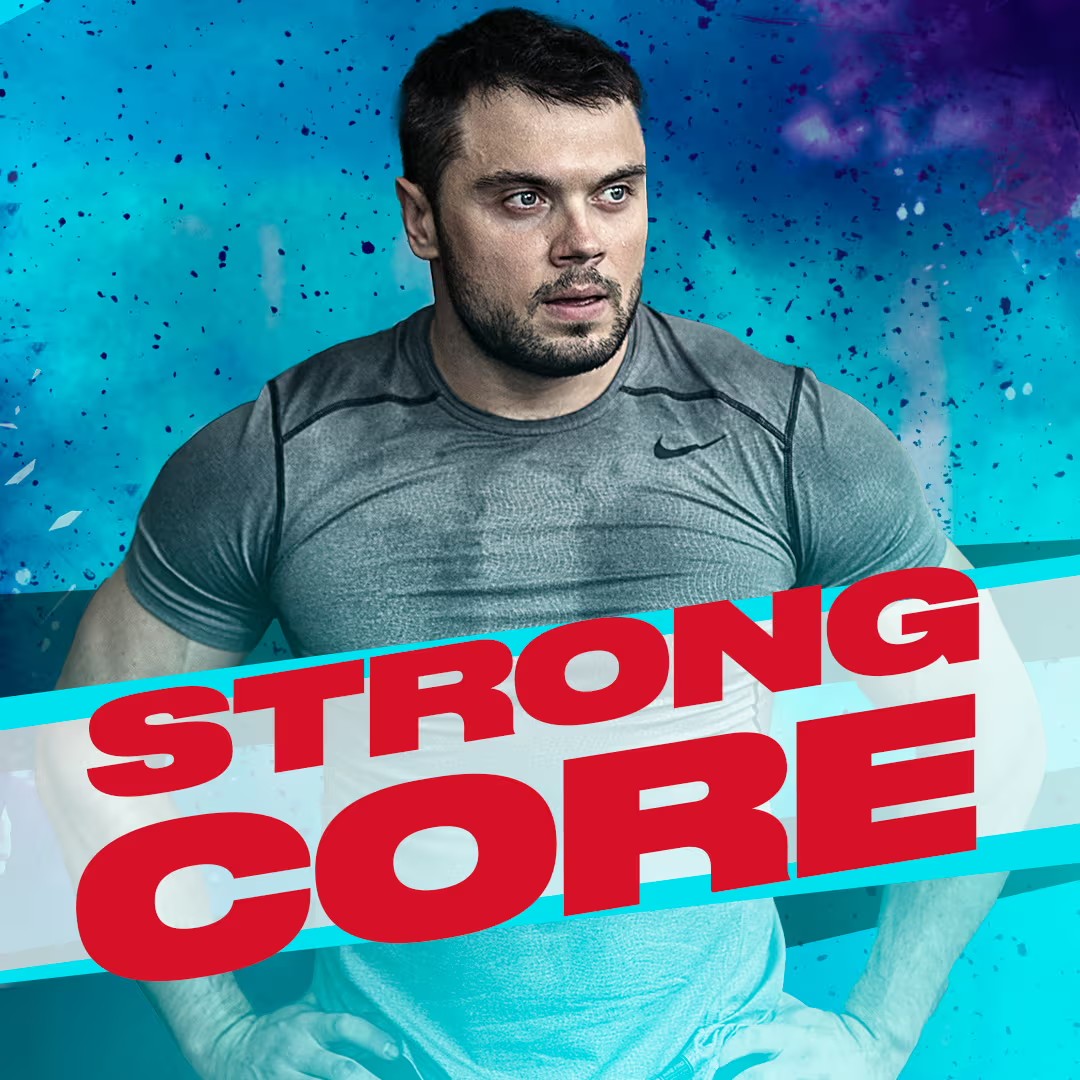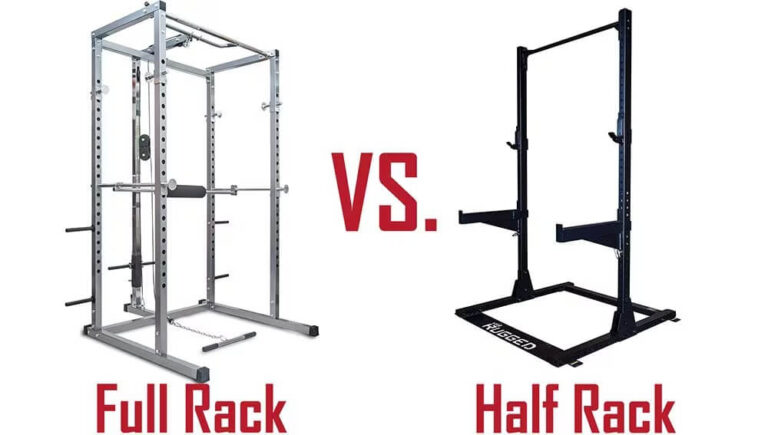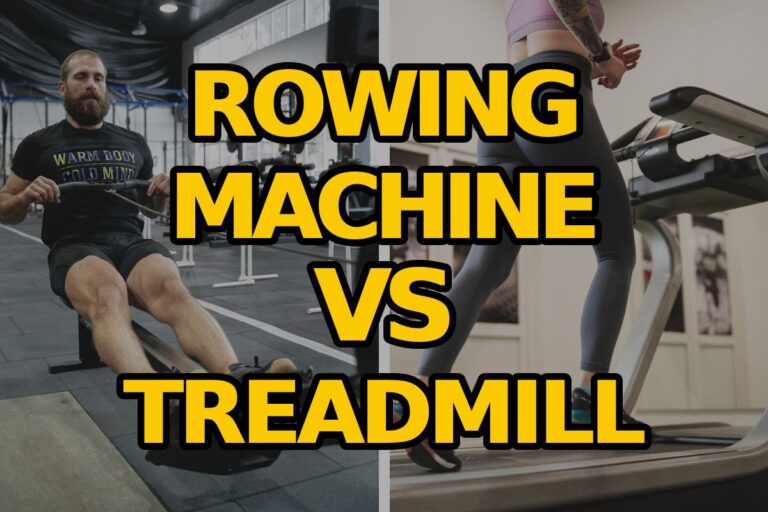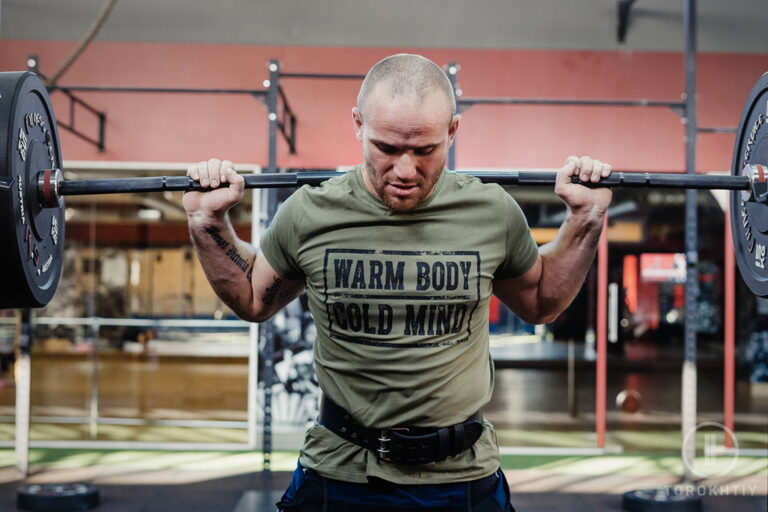14 Best Core Exercises For Men: Physical Therapist Approved
Need help engaging your core? Is your midsection growing to undesirable levels? What are the top core exercises for men to have a firmer midsection? These are all legit questions, and the answers to these questions and many more are covered in this article.
The top core exercises for men are focused not only on strengthening your midsection but also the posterior muscle of your body. A core strengthening workout will improve your stability, control, and physique.
Disclaimer! This blog post is a comprehensive guide to core exercises for men that emphasizes the importance of core strength and lists various exercise options. Please consult a healthcare or fitness professional before starting any new exercise program. We aim to offer accurate and valuable information to readers seeking to improve their health.
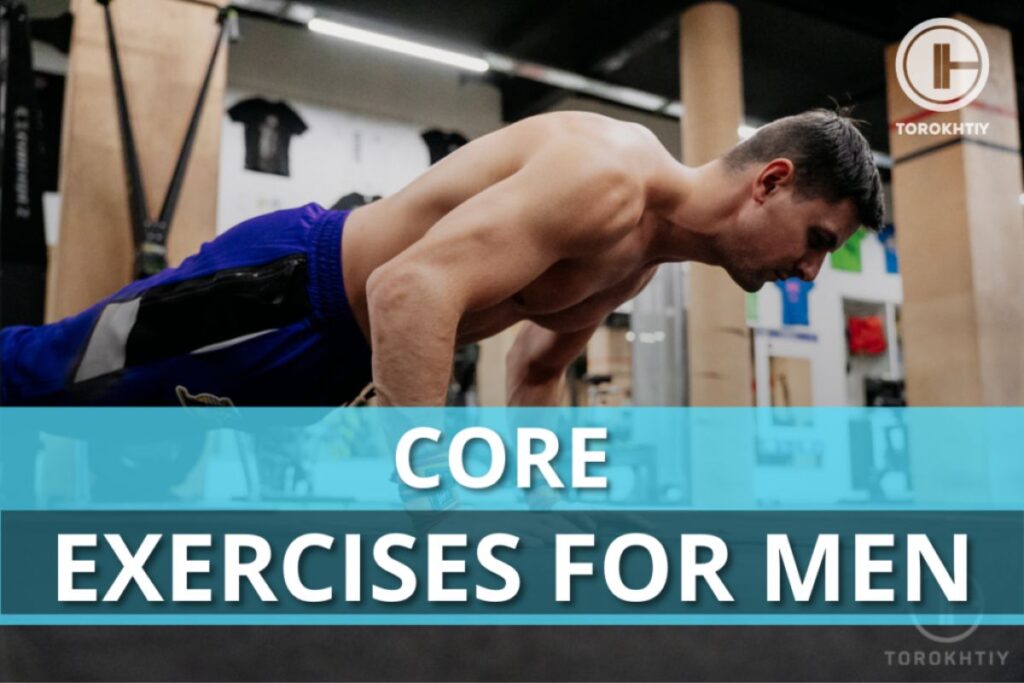
What Muscles Make “The Core”
Before we dive deep into the most recommended core strengthening exercises for men, we will define what’s “The Core” in the human body.
When we talk about the core, think about a cylinder. The core is a 3-dimensional structure that encompasses a group of muscles. These muscles are the rectus abdominis, the internal and external obliques, the pelvic floor, the diaphragm, the erector spinae, the lumbar multifidus, the quadratus lumborum, and the buttocks.
However, the fitness and health industry considers the transversus abdominis, obliques, lumbar multifidus, and quadratus lumborum as the vital core muscles.
Maintaining a strong and healthy core is paramount, especially as we age. Core stability is required for adequate weight distribution across the spine, pelvis, and lower extremities, especially during explosive movements and lifting heavy weights. These muscles work together to maintain a stronger trunk and improve movement control.
The Importance Of Core Strength For Men
Reason #1
A strong core is essential, because it has a direct effect on physical health and well-being.
Reason #2
The core is essential to support the spine and pelvis. The core muscles hold everything in place, and without it, we will be walking blobs.
Reason #3
It is also required for optimizing trunk posture and for optimal force production. A strong core is essential to maximize our trunk stability during lifting activities and movements that require explosiveness.
🔻Core And Back Workout Program
🔻Core and Back Workout Program
Elevate your fitness game with Core and Back Workout Program!
Program details:
- 🔥 Achieve core strength and fat loss.
- 📆 3-week program
- 🏋️♂️ 6-7 days/week
- ⏰ 30-40 minutes per session
- 💡 Expert Guidance by Oleksiy Torokhtiy
Join now for a stronger back, perfect posture, toned core, and renewed energy. Suitable for all fitness levels. Get started today!
Reason #4
Men with a firmer midsection are less likely to have back pain and lower their chance of injuries during physical activities, allowing them to live prolonged, active lifestyles. A strong core foundation is crucial for men with high physical demand jobs and athletes.
Reason #5
Maximize athletic performance. Men participating in sports, exercise routines, or other physical activities benefit from a strong core since it improves their agility, strength, power, endurance, and general physical skills.
In summary, core strengthening exercises for men are essential for physical preparedness, athleticism, and fitness. Also, it contributes to a sense of confidence and empowerment.
Does A Weak Core Is The Primary Reason For Low Back Pain?
Evidence suggests that the majority of low-back pain presentation is nonspecific, meaning that it is not possible to identify the single origin of the patient’s symptoms. It is untrue that core stability exercise is the most effective option to treat low-back pain. Many studies have shown that core strengthening exercises will help significantly to reduce lower pain, especially in the acute stage.
The literature is more consistent with performing lower back strengthening exercises as a primary intervention to treat lower back pain.
Moreover, core activation may not vary between symptomatic and healthy asymptomatic people, nor can core stability changes predict improvements in disability following a particular exercise.
In short, it is essential to understand that anyone who claims that core stability exercise is the most effective option for low-back pain is not current with scientific literacy and lacks supporting evidence.
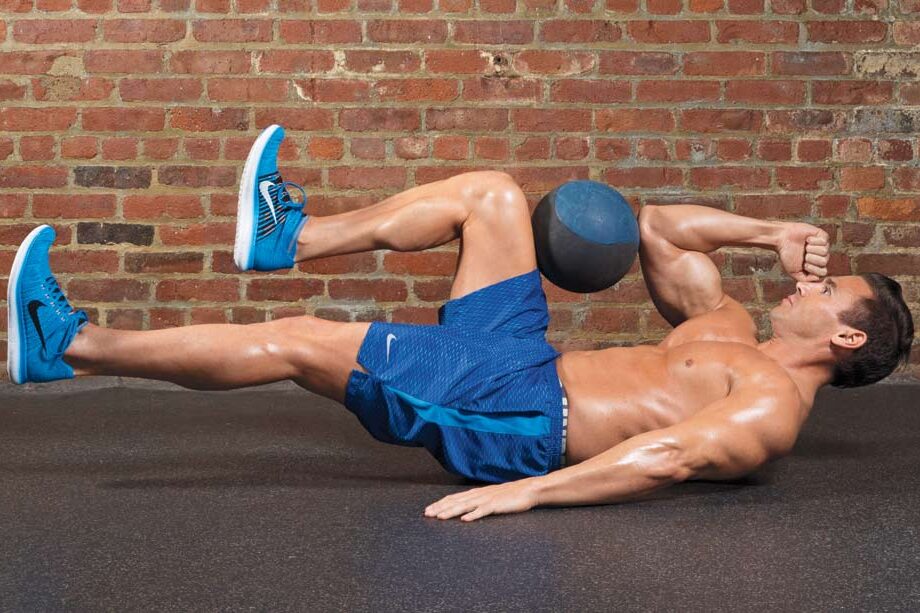
Most Popular Core Exercises For Men
Now, let’s explore the best core exercises for men, focusing on the specific core muscles they target.
1. Exercises to Strengthen The Rectus Abdominis
The Rectus Abdominis is a vertical muscle located in the front of the abdomen, known as the “six-pack” muscle. It is an essential abdominal wall muscle divided into two halves, left and right, by a robust connective tissue called the linea alba.
The Rectus Abdominis is crucial in maintaining posture, core stabilization, and spine flexing. It is a popular target for core-strengthening activities since it gives the abdomen a defined and sculpted appearance when well-developed.
• Leg Raises
Lie on your back with your lower back flat on the surface. For beginners, lift one leg off the ground. For more advanced athletes, lift both legs off the ground and gently control the descent.
• Sit-ups
Lie on your back with your knees bent at around 45 degrees and your hands behind your head or across your chest. Engage your core and raise your upper body off the ground while keeping your feet grounded on a stable surface.
Then, control the descent. A more advanced move to maximize your core strength during a sit-up is performing the sit-up from a decline bench or Glute Hamstring Developer (GHD).
• Plank
Begin with your forearms on the ground and elbows precisely beneath your shoulders. Keep your body straight from head to heels, engage or tuck your midsection, and hold the position. Beginners have the plank position for at least 30 sec; more advanced individuals hold it for at least a minute.
2. Exercises to Strengthen The Obliques
The obliques are important core muscles found on either side of the abdomen. There are two types: external obliques, which run diagonally from the lower ribs to the pelvis, and internal obliques.
They play a role in core stability, spinal rotation, and lateral flexion. Strengthening the obliques is essential for a strong and balanced core, which helps support posture and everyday movements.
• Russian or Oblique twists
Sit on the floor, bend your knees at around 45 degrees, lean slightly back, and perform a controlled body twist to both sides.
• Side planks
To do this, support your body on one elbow and the side of your foot, lift your hip, and maintain this position. Ensure your body remains straight.
• Bicycle crunches
Lie on your back with your hands behind your head, lift your shoulders off the ground, and move your right elbow toward your left knee while extending your right leg in a pedaling action. Repeat this with the other side.
• Woodchoppers
Stand with your feet shoulder-width apart, grasp a weight or medicine ball with both hands and pivot at your hips and waist to move the weight diagonally across your body from a high position on one side to a low position on the opposite side.
3. Specific Exercises to Strengthen The Transverse Abdominis (TVA)
The transverse abdominis, also known as the body’s natural waist belt, is critical in stabilizing the spine and pelvis. The Transverse Abdominis is a deep abdominal muscle vital for postural stability, power development, and posture.
Unlike other abdominal muscles that move the trunk, the TVA’s primary function is to compress the abdominal contents, providing spinal support and core stability.
• Plank
Begin with your forearms on the ground and elbows precisely beneath your shoulders. Keep your body straight from head to heels, engage or tuck your midsection, and hold the position. Beginners have the plank position for at least 30 sec; more advanced individuals hold it for at least a minute.
• Vacuum Exercise or Transverse Abdominis Contraction (TAC)
Stand up straight against a wall or lie flat on the floor. Take a deep belly breath and slowly exhale with pursed lips. In the exhalation, keep your lower back flat against the surface. Suck your stomach or think about pulling your belly button in the direction of your lower back, and hold this contraction for the duration of your exhalation.
• Bird-dog
Start on your hands and knees, extend one arm forward while extending the opposite leg backward, and hold the position for a few seconds, slowly and controlled, then return to the starting position and repeat with the other arm and leg.
• Bananas
To do this exercise, lie on your back and activate your core muscles. Lift your upper body off the ground while lifting your legs, aiming to create a “banana” shape with your body. Reach your hands toward your toes and then lower back down with control.
4. Specific Exercises to Strengthen The Lower Back
Your back muscles are as important as your front and side core muscles. The lower back muscles are crucial for spine mobility, power development, core stability, and eccentric control. They also help maintain an upright posture, preserve the spine’s curvature, and absorb compressive forces.
• Superman or back extension
Lie face down and perform a controlled raise of your arms and legs simultaneously by engaging your lower back. Hold the position for 10 to 20 seconds.
• Reverse Hyperextension
Lie face down on a bench, GHD, or any suitable stable surface. Grip the edges for support, lift your legs and lower back off the bench by engaging your lower back and glute muscles, then lower them down with control.
• Bridges
Lie on your back with knees bent, feet flat on the floor, and arms at your sides, then lift your hips off the ground by squeezing your glutes and lower back down to the starting position.
Core Workout Plans For Men
Now, let’s outline some of the best core workouts for men. These exercises are tailored to different fitness levels. They can be great supplementary core exercises at the gym. Or they can be fantastic core exercises for men at home.
1. Beginner Core Workout For Men
For men looking to start building core strength, this beginner’s workout is an excellent way to begin. It’s designed to be manageable and effective, and you’ll perform it three days a week for 10-15 minutes per session. Here are some mid-body workouts:
- Planks (2 sets, 20-30 seconds each): Start in a push-up position with your forearms on the ground and elbows directly under your shoulders. Keep your body straight from head to heels, engage your core, and hold this position for the specified time.
- Sit-ups (2 sets of 15-30 reps): Lie on your back with your knees bent at around 45 degrees and your hands behind your head or across your chest. Engage your core and raise your upper body off the ground while keeping your feet grounded on a stable surface. Then, control the descent.
- Leg Raises (2 sets of 10-15 reps): Lie on your back with your legs straight. Place your hands under your hips for support if needed. Lift your legs off the ground, keeping them directly, and lower them slowly, engaging your core throughout the movement.
- Russian Twists (3 sets of 15-20 reps): Sit on the floor with your knees bent, lean back slightly, and twist your torso to each side, touching the ground with the weight of your hands.
Perform each exercise with proper form and focus on engaging your core muscles. As you become more comfortable and robust, you can gradually increase the duration or repetitions to continue challenging your core muscles. This workout is an excellent starting point for men who want to improve core strength and stability.
2. Intermediate Core Workout For Men
Once you’ve built a foundation with the beginner’s core workout, leveling up with an intermediate routine is time. This workout is designed for men who want to enhance their core strength and stability further. Perform it 4-5 days a week for 20-30 minutes per session.
- Side Planks (3 sets, 20-30 seconds on each side): Support your body on one elbow and the side of your foot, maintaining a straight line from head to heels. Engage your core and hold for the specified time on each side.
- Vacuum Exercise (3 sets, 20-30 seconds each): Stand straight, exhale all your air, and suck your stomach, holding for the specified time. This exercise focuses on deep-core engagement.
- Leg Slides (3 sets of 12-15 reps): Lie on your back with your legs straight. Slide one heel along the ground while engaging your core, then return to the starting position and repeat with the other leg.
- Bicycle Crunches (3 sets of 15-20 reps): Lie on your back with your hands behind your head. Lift your shoulders off the ground, alternately bringing your right elbow toward your left knee while extending your right leg and vice versa.
- Reverse Hyperextensions (3 sets of 10-12 reps): Lie face down on a bench or a suitable surface, ensuring your hips are at the edge of the bench and your legs hang freely. Grip the edges of the bench or use the handles for support. Engage your lower back, glutes, and hamstrings. Lift your legs and lower back off the bench, creating a slight arch in your lower back. Focus on squeezing your glutes at the top of the movement. Lower your legs and lower back down to the starting position with control.
This intermediate core workout introduces more challenging exercises and increased sets and repetitions. It will help you progress toward a more robust and more stable core. Focus on proper form and engage your core throughout each exercise. Gradually increase the intensity as you gain strength and confidence.
3. Advanced Core Workout For Men
If you’ve mastered the beginner and intermediate core workouts and are ready for a more challenging routine, this advanced core workout for men will take your core strength to the next level. Perform this workout 5-6 days a week for 30-40 minutes per session.
- Back Extensions (3 sets of 15-20 reps): Use a back extension bench or GHD. Begin with your upper body hanging down and your legs secured. Lift your upper body until it’s in line with your legs, then lower it back down.
- Woodchoppers (3 sets of 12-15 reps per side): Stand with your feet shoulder-width apart, hold a weight or medicine ball with both hands, and pivot at your hips and waist to bring the weight diagonally across your body from a high position on one side to a low position on the opposite side.
- Plank and Side Plank variations (3 sets, 30-40 seconds each): Incorporate plank variations such as side plank leg lifts, forearm plank with shoulder taps, or knee-to-chest movements to challenge your core differently.
- GHD or decline bench Sit-ups: Lie on your back with your knees bent at around 45 degrees and your hands behind your head or across your chest. Engage your core and raise your upper body off the ground while keeping your feet grounded on a stable surface. Then, control the descent.
This advanced core workout introduces more intense exercises and variations. It will help you enhance core strength, stability, and endurance. Remember to maintain proper form and engage your core muscles during each exercise.
Our Recommended Core Program
If you’re searching for a core day workout or a way to take your fitness routine to the next level, we highly recommend the Torokhtiy back and core workout program. This program consists of 21 expert-designed workouts prioritizing core strengthening and fat loss, allowing you to achieve the best possible results.
Whether you prefer to exercise at home or on the go, these versatile routines require minimum equipment, making them perfect for anyone looking to get fit. By making these exercises a regular part of your fitness routine, you’ll be on the path to achieving a stronger, healthier core and back.
FAQ
What Is the Most Effective Core Exercise?
There is no singular effective core exercise to improve strength. It is highly dependable from person to person. Think about core strengthening exercises as a collective of exercises.
How to Get Six Packs in 30 Days?
Achieving a visible six-pack within 30 days is an extremely challenging goal that depends on many factors, such as your initial fitness level, dietary habits, and genetic makeup. It’s essential to focus on a combination of core exercises, a calorie-controlled diet to reduce body fat, and cardiovascular workouts for overall fat loss.
Is It Ok to Workout Your Core Every Day?
Regularly working out your core can benefit your body, but it may not be necessary or optimal to exercise it every day. Like any other muscle group, your core muscles require time to recover and grow. Work on your core 2-4 times a week for at least 30 to 50 min. It’s important to prioritize rest and recovery days between sessions to prevent overtraining and potential injury.
Are 3 Core Exercises Enough?
The effectiveness of core exercises depends on the quality of the exercises and how they are incorporated into your fitness routine. While three core exercises can be a part of your routine, it’s generally recommended to have a more comprehensive approach. A well-rounded core workout is vital to maximizing efficiency and improving strength and performance.
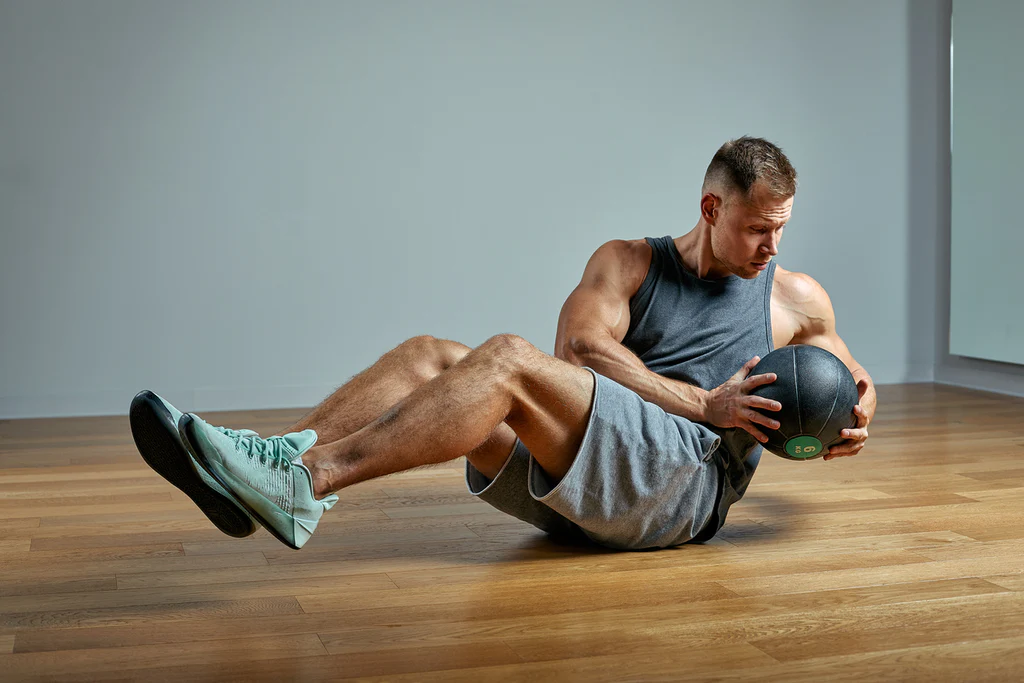
Conclusion
Core or waist exercises for men are a cornerstone of overall fitness and well-being. By strengthening your core, you improve posture, reduce the risk of back pain, and enhance your stability during daily activities and workouts. We’ve discussed the importance of core strength and covered a range of practical exercises to target different core muscles.
Additionally, we provide customized workout plans suitable for women at various fitness levels. It’s time to embark on your journey towards a stronger core and a healthier you. Have questions or personal experiences to share? We invite you to engage with us in the comment section below. Let’s learn, motivate, and empower each other to achieve our fitness goals!
References:
- Oliva-Lozano JM, Muyor JM. Core Muscle Activity During Physical Fitness Exercises: A Systematic Review. Int J Environ Res Public Health. 2020 Jun 16;17(12):4306. doi: 10.3390/ijerph17124306. PMID: 32560185; PMCID: PMC7345922.
- Cavalli M, Aiolfi A, Bruni PG, Manfredini L, Lombardo F, Bonfanti MT, Bona D, Campanelli G. Prevalence and risk factors for diastasis recti abdominis: a review and proposal of a new anatomical variation. Hernia. 2021 Aug;25(4):883-890. doi: 10.1007/s10029-021-02468-8. Epub 2021 Aug 6. PMID: 34363190; PMCID: PMC8370915.
- Akuthota, V., & Ferreiro, A. (2005). Core stability exercise principles. Current Sports Medicine Reports, 4(3), 179-183.
- Augeard N, Carroll SP. Core stability and low-back pain: a causal fallacy. J Exerc Rehabil. 2019 Jun 30;15(3):493-495. doi: 10.12965/jer.1938198.099. PMID: 31316947; PMCID: PMC6614774.
- Godman, H. (2022, September 1). Simple core strengtheners for every day of the week. Harvard Health.https://www.health.harvard.edu/staying-healthy/simple-core-strengtheners-for-every-day-of-the-week
- Willardson, J. M. (2007). Core stability training: applications to sports conditioning programs. Journal of Strength and Conditioning Research, 21(3), 979-985.
- STRONG CORE. (n.d.). Torokhtiy Weightlifting.
https://torokhtiy.com/products/strong-core-and-healthy-back
Why Trust Us?
With over 20 years in Olympic Weightlifting, our team does its best to provide the audience with ultimate support and meet the needs and requirements of advanced athletes and professional lifters, as well as people who strive to open new opportunities and develop their physical capabilities with us.
By trusting the recommendations of our certified experts in coaching, nutrition, dietology, and sports training programming, as well as scientific consultants, and physiotherapists, we provide you with thorough, well-considered, and scientifically proven content. All the information given in the articles concerning workout programming, separate exercises, and athletic performance, in general, is based on verified data. We ensure that you can rely on our professionals’ pieces of advice and recommendations that can be treated as personalized ones which will benefit you and fully meet your needs.
The product testing process is described in more detail here
Author: Ernesto Mendez
Orthopedic Clinical Specialist
Best Results: Snatch – 208 kg,
C&J – 240 kg
Dr. Ernesto Mendez is a licensed physical therapist, a board Orthopedic Clinical Specialist (OCS) and founder of Movement 4 Wellness Physical Therapy, LLC. He earned his degree from Thomas Jefferson University. He is also an Olympic weightlifting coach (USAW L1) and Functional Fitness Level 1 Trainer. His experience includes the areas of pain management, movement analysis, injury recovery, surgical rehab, corrective exercise, and athletic, military, and occupational performance. Dr Mendez is passionate about Olympic weightlifting and fitness. Ernesto Mendez is responsible for designing multiple training programs, writing blog articles, posting daily weightlifting content, doing live weightlifting and mobility seminars.

